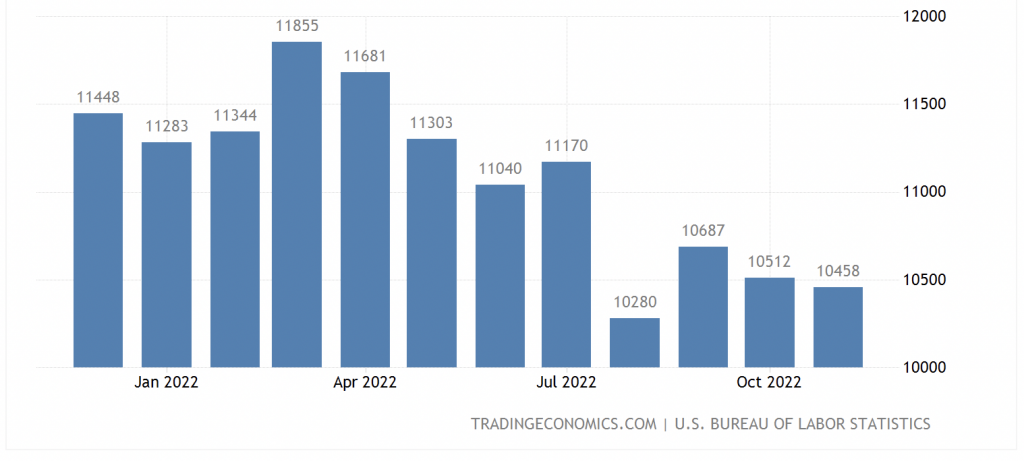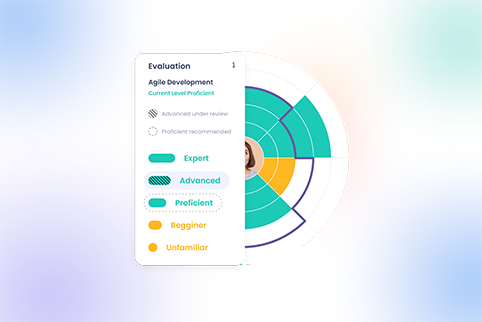
A global recession has been predicted for months now, and the first signs are already visible. Record inflation rates, the rising cost of living, and tightening financial conditions in most regions make for the perfect storm.
And as the world becomes more uncertain, with international conflicts and the effects of the pandemic spreading fears, consumers are spending less, which eventually spirals into a recession. While the potential for a recession has been on the horizon for a while, whether it will turn into reality or not remains to be seen. What it’s certain is that a period of slower growth is looming.
According to the World Economic Outlook report, “global growth is forecast to slow from 6.0 percent in 2021 to 3.2 percent in 2022 and 2.7 percent in 2023. This is the weakest growth profile since 2001 except for the global financial crisis and the acute phase of the COVID-19 pandemic and reflects significant slowdowns for the largest economies with about a third of the world economy facing two consecutive quarters of negative growth.”
What are the effects of the economic downturn on the labor market?
In the last months, the tech industry seems to be going through a major hit, with layoff announcements mounting. Slower than anticipated growth, the sharping decline of stocks, and an uncertain economic environment have forced these companies to overturn the “overhiring” practices of the last years.
Unlike the financial crisis from 2008, tech layoffs are less likely to spread to the overall economy, especially since some sectors struggle with the lack of available workers. As Bill Conerly, Forbes Senior Contributor states in a recent article, “Some sectors will be downsizing vigorously while other sectors remain understaffed.”
Even though some economists see the potential for declines in employment this year, as of the end of 2022, the talent market remained tight despite a slight slowing down. While the job market is slowly cooling down compared to the peak months of March and April, the unemployment rate is stable, within a narrow range of 3.5 to 3.7 percent. This figure sets the context of a different type of crisis than the one back in 2008.

Preparing for a period of a slower growth
Recession or not, companies worldwide are preparing for a period of below-the-trend growth, as Goldman Sachs Chief Economist Jan Hatzius warns. In these times of unpredictable events, companies might be forced to apply different scenarios including resizing, budget optimization, and prioritizing for performance.
During the past years, the hybrid work model, the shifting employees’ expectations, talent shortage due to lack of skills, and the Great Resignation wave were all top priorities for HR leaders. HR priorities in a prospect of a recession will slightly be different.
HR executives and leaders will have the difficult task to find the right balance between possibly cost-cutting measures, further investing in talent and leadership development, and enhancing employees’ productivity. Read on to learn more about the role of HR in a recession, and the set of HR priorities in the midst of economic instability.
1. Shifting to the new paradigm of “do more with less”
How many times did you hear it lately “do more with less”? The truth is that no matter your job role or the industry you’re in, there comes a time when you’ll have to drive positive results with fewer resources. And this is particularly true during a period of economic downturn. But where to start from?
Start where you need it the most: from the current company strategy to the short and long-term goals and the critical roles to achieve them. Then split job roles into tasks and activities and map them into skills. Depending on objectives, you’ll realize that some skill pools matter more than others. And some roles matter more than others in the overall equation.
With these things in mind, you’ll have to determine how to shift HR practices to optimize costs for certain activities or departments and increase efficiency. You might have to reevaluate processes that are too bureaucratic and overload employees useless, automate some manual operations or recalibrate and better prioritize execution for the next period. Prioritizing initiations gives you the occasion to focus all your efforts in a clear direction and thus have a bigger impact with the resources you have.
2. Talent mobility as an alternative to hiring freeze or letting people go
While some companies, particularly in the tech, have already announced they are cutting off jobs, several other big-name firms like Walmart and FedEx have indicated plans to freeze hiring at the end of last year. But as shown in the figures above, labor demand remains historically high.
Companies that still struggle with talent shortage but at the same time are trying to cut off costs associated with new hiring this year, might look instead to the best-fit candidates from inside the organization. This practice means matching open roles with internal employees based on their set of skills and interests with the help of an internal talent marketplace.
An internal talent marketplace infers the skills you have and then matches them to jobs that are relevant or are a close match, surfacing employees who might not be visible and otherwise might have been overlooked. At its core, the internal talent marketplace gives you the ability to move talent dynamically, which is critical in times of crisis and uncertainty.
As market priorities and consumer needs change fast, talent mobility is also a great alternative to cutting off jobs. Done strategically and sometimes including limited reskilling programs, resource reallocation can move the needle in the direction of your top business priorities.
3. Riding the waves of the economic downturn with an increased focus on performance
Expectations that the global economy will only get worse during the next 6 months will force organizations to examine performance in sharper detail, and under-performance will probably be addressed in a more direct and proactive manner. More than ever, leaders need to ensure clarity around organizational goals so that all employees are aware of the outcomes the business is looking for and when they are expected to be achieved. When everybody is on the same page in terms of goals and gets visibility of how their work can contribute to the bigger picture, they will be more focused and strive for more.
Setting clear expectations and making people responsible for successes, failures, and also new goals is an important part of the process that should include both managers and employees. This is why effective OKRs should be accompanied by ongoing feedback and 1:1s to constantly identify the progress toward the objectives and ways to improve both performance and people’s capabilities.
At the end of each performance cycle, managers should easily identify the top performers, that segment of the employees that brings value and needs to be retained in the company in the long run.
4. Amplifying managers’ effectiveness with people intelligence data
Managers supported by HR will be the main drivers of setting new directions during a potential recession. More expectations for the roles will arise with a thirst for data to drive decisions around people. To make informed decisions in less time, managers will have to tap into people intelligence data and find the answers to some key questions:
- Why are some employees more productive than others?
- Do they have the right capabilities and skills?
- Who are the top performers of the company?
- Which are the best-fit development opportunities they can take to bring even more value?
Data can surface insights into these topics and many more, like for example 1:1s impact on employees’ performance. And there’s people intelligence data that can help managers fill the talent gaps or better workforce planning, which directly translates into cost optimizations. Then with the help of a smart nudging system, employees can receive tailored opportunities to develop critical skills, participate in new projects, embrace productive behaviors, and better collaborate within and across teams.
5. Keeping all the communication channels open
Especially during an economic recession which might negatively impact HR decisions, it’s critical to communicate constantly and transparently about the changes in the organization. So make a top priority of keeping your employees informed. Also, ask for feedback regularly and listen to your employees’ opinions regarding the changes and challenges ahead.
Open and straightforward communication can establish trust with the employees and reduce anxieties related to the unknown. Shoring up communication can only bring you benefits. Being able to better understand your employees as individuals means the first step to creating the context in which they can succeed. This is why the leaders’ role will be critical in the next period to support employees in navigating change, equip them with the information they need, and inspire trust.
Develop agile people strategies that match the shifting business needs with Nestor, the People Intelligence Platform
An economic downturn doesn't necessarily mean to be the most critical period for your organization as long as you can translate the new business priorities into the right people strategies.
The Nestor platform helps organizations build agile people strategies to match the fast-changing business needs and allows HR and people leaders to constantly measure, adapt and improve their people strategy. In a context of an economic downturn, HR needs higher transparency to balance the organizational goals with cutting-cost measures, limited talent investment, and better resource allocation for increased effectiveness.
Nestor offers critical insights and supports better decision-making by bringing together employee engagement, performance, and development planning with a skills-based approach. In Nestor, each employee gets a dynamic skills-based profile as a starting point for managers to identify strengths and develop more effective people strategies. We use skills as the common touchpoint to enable better resource allocation through talent mobility, surface the critical skills to adapt and perform amid volatile circumstances, and support leadership development while keeping everyone engaged and connected to the company’s goals.
Get in touch with us to see how our solution fits your organizational unique needs during an economic downturn.







